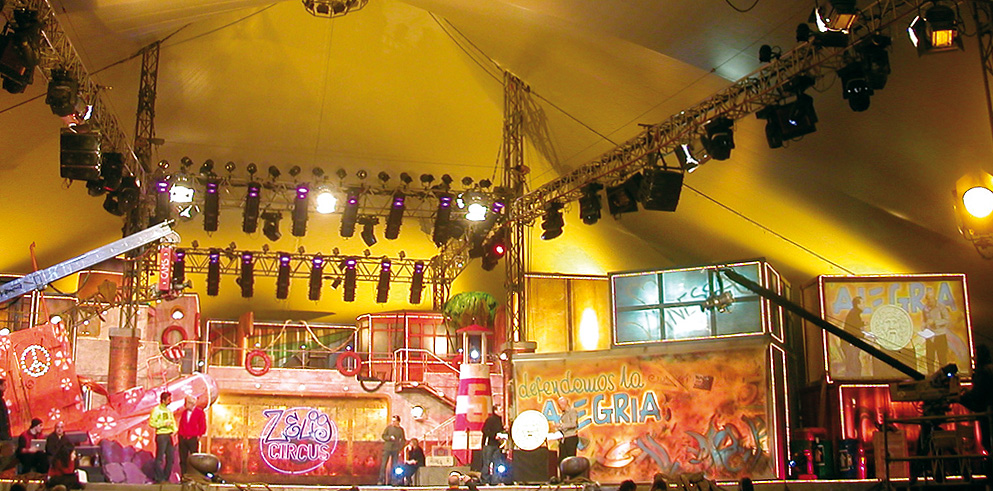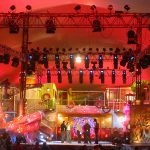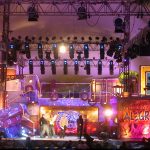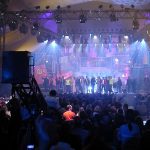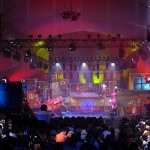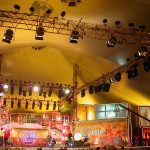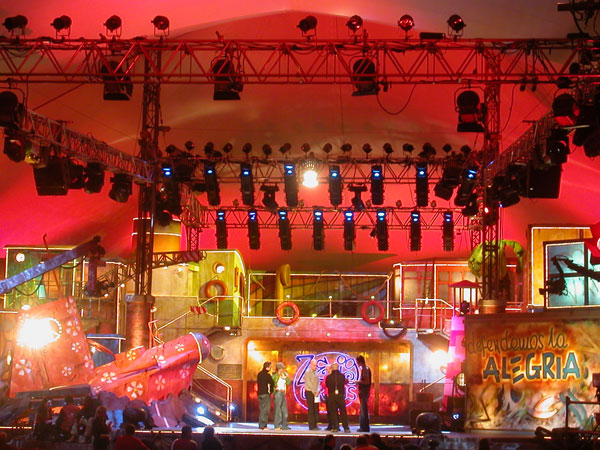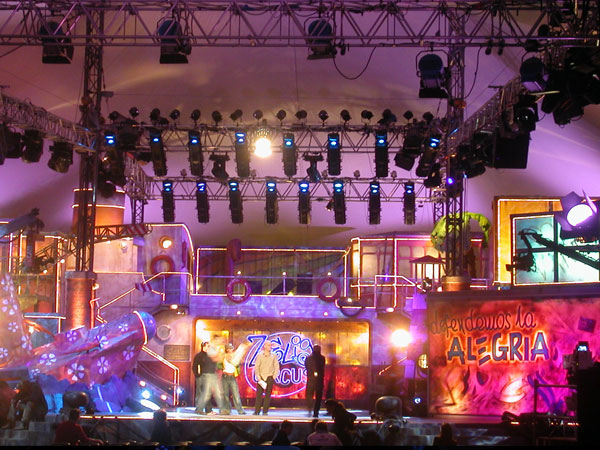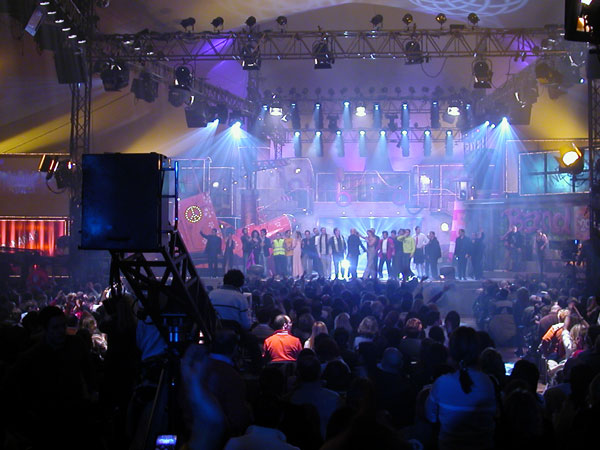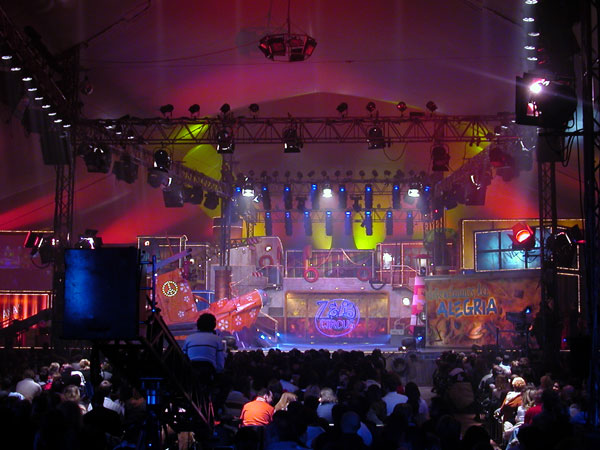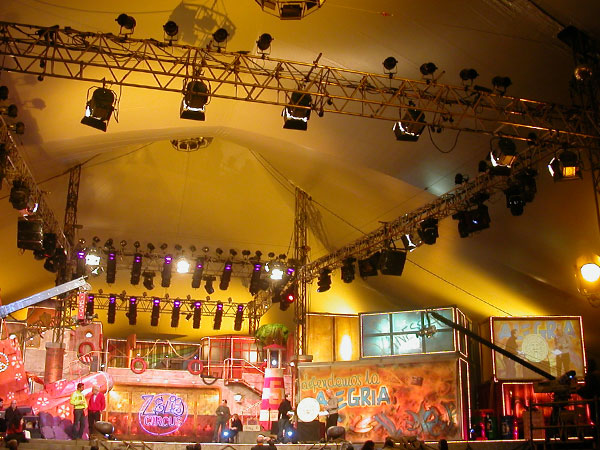The story of Zelig began back in 1986 on the Naviglio Martesana canal, following the tradition that cabaret venues in Milan were a meeting place, like a “house for artists”. Ten years later, in 1996, Zelig decided to become “big” and from Milanese it became national, thanks to theatre productions and collaboration with the TV channel Italia 1 on the programme “Zelig Facciamo cabaret” and finally the cult programme “Zelig Circus” broadcast on Canale 5, a phenomenon of record-breaking audiences and a success with the public and with the critics.
Today, 18 years later, Zelig continues to seek out new talents in Italian comedy to offer them a stage or give them television as a showcase, keeping alive the “cabaret” genre, of which it has now become a mark of guarantee.
Zelig 2005 is housed in the marquee theatre of Sesto San Giovanni, an area of 3,500 sq.m. specially fitted out for the television programme and at technical level it stands out for the elaborate scenic designs and for spectacular lighting.
Compared to last year, the set has been rebuilt from scratch: the leitmotiv is a setting that evokes a port, with boats, piers, lifejackets, ropes and jetties, covering a stage of 150 sq.m. To show this fantastic set off to its best, a highly professional Clay Paky lighting system has been chosen, supplied by Xenon, under the management of Renato Neri, which uses 20 Stage Color 1200 lights, 20 Stage Zooms 1200 and 16 Super Scan Zooms.
The scanners and the moving body luminaires are placed geometrically on the truss system above the stage and auditorium, whilst other Stage Color and Stage Zoom appliances are on the ground for the lateral beams and for back-projections. Lastly, a scanner is positioned in the lighthouse on the set, to simulate the characteristic “revolving light” of real lighthouses.
To guarantee the maximum capacity under the marquee theatre, the six antennae that support the marquee have their base in the auditorium and also partially in the stage: both the lights and the audio system have therefore been hooked to the truss that connects the various antennae around the perimeter.
Massimiliano Cavenaghi, Zelig’s Photography Director tells us: “As it is a cabaret show, which came into being and grew up through direct contact with the public, we wanted to keep the criterion of lighting as originally in the theatre: the light does not create the show, but gives it added value. To obtain this, great use is made of coloured projections. Generally, each artist is identified with a different colour and this way we can give each character a precise “shade” that is recognisable through all the episodes”.
Cavenaghi explains to us that two ways of lighting are mainly used: “diffused” lighting, used for the groups of cabaret artists or for those that include a certain mobility in their performance on stage, and more “concentrated” lighting on the artist, further marked by the spotlights, used for the authors of monologues who need lighting that makes the atmosphere more intimate.
Zelig represents the classic meeting point between the live performance and the TV event, and so theatrical lighting has to be combined with the requirements of television recording. “Effects lighting, more connected with television,” continues Cavenaghi, “is found when there are breaks or during the dances and musical pieces, which this year are fairly frequent. Sometimes, together with the artists, we find original solutions: during the performance of the “Noir”, last year, a colour temperature conversion was applied directly on to the spotlights. The “thunder” effect that concludes Paolo Migone’s act is obtained by simultaneously strobing all the back-lit scanners so that the image is saturated before fading into black”.
Andrea Mantovani, lights programmer, underlines the efficiency of the Clay Paky projectors: “The scanners and moving body luminaires are proving once again that they are perfectly reliable and they have never given us problems of any kind. Above all, their colours are very “full”, which can also be appreciated through the television recording, whilst the optical precision and the effects are truly at top level.
Zelig Circus, which has recently won the TV Oscar prize as the “best TV programme voted by the public” continues until April and, considering the extraordinary and constantly growing success of the past few years, we expect that it will represent for a long time yet the most important hothouse of talent for cabaret and the school of comedy in Italy.
